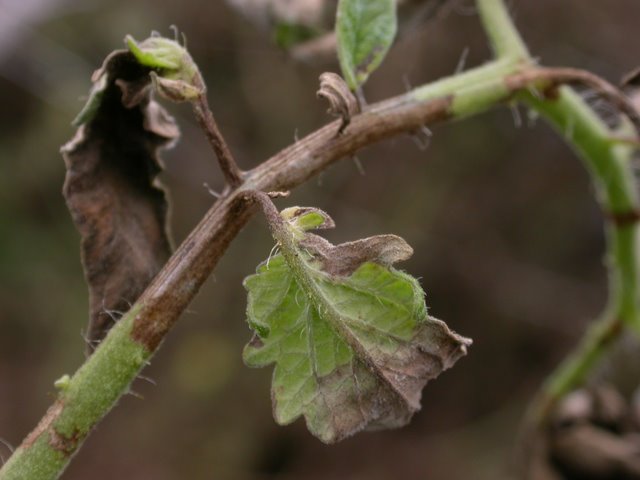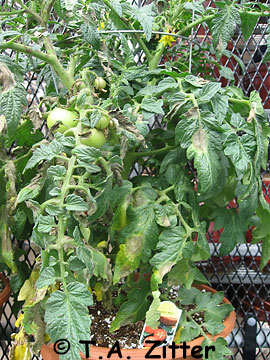

It can be frustrating for gardeners to put in so much effort into growing their tomatoes only to see them fall victim to these diseases. The symptoms of late blight are similar, but the spots are typically larger, and there is also a white, moldy appearance on the affected areas. The symptoms of early blight include circular, dark brown spots on the leaves, stems and fruit. These diseases are caused by fungal pathogens and can spread rapidly in warm and humid conditions, leading to significant damage to tomato plants, reduced yields and lower quality fruit. 201–210.Tomatoes are a beloved and versatile vegetable that are a staple in many gardens, but they can be vulnerable to diseases such as early blight and late blight. Spencer, T.M., O'Brien, J.V., Start, W.G., Adams, T.R., Gordon-Kamm, W.J., and Lemaux, P.G., Segregation of Transgenes in Maize, Plant Mol. 3–12.ĭeineko, E.V., Zagorskaya, A.A., Shakirova, N.V., Rivkin, M.I., and Shumnyi, V.K., Changes in the Expression and Heridity of Marker Gene nptII in the Progeny of Transgenic Nicotiana tabacum L. Stam, M., Mol, J.N.M., and Kooter, J.M., The Silence of Genes in Transgenic Plants, Ann. and Korosov, A.V., Osnovy biometrii (Principles of Biometry), Petrozavodsk: Petrozavodsk. Popkova, K.V., Fitoftora kartofelya (Potato Phytophthora Infection), Moscow: Kolos, 1972. Patrikeeva, M.V., Metodicheskie ukazaniya po fitopatologicheskim rabotam pri selektsii kartofelya na ustoichivost' k fitoftorozu (Handbook on Phytopathologic Studies during Potato Breeding for Resistance to Late Blight), Leningrad: Vses. Translated under the title Gennaya inzheneriya rastenii: laboratornoe rukovodstvo, Moscow: Mir, 1991, pp. Skott, R., Dreiper, J., Dzhefferson, R., D'yuri, G., and Dzhekob, L., Analysis of Plant Gene Organization and Expression, Plant Genetic Transformation and Gene Espression.

1521–1528.īregitzer, P., Halbert, S.E., and Lemaux, P.G., Somaclonal Variation in the Progeny of Transgenic Barley, Theor. Walden, R., Fritze, K., Hayashi, H., Miklashevichs, E., Harling, H., and Schell, J., Activation Tagging: A Means of Isolating Genes Implicated as Playing a Role in Plant Growth and Development, Plant Mol. 1351–1354.īabiychuk, E., Fuangthong, M., van Montagu, M., Inze, D., and Kushnir, S., Efficient Gene Tagging in Arabidopsis thaliana Using a Gene Trap Approach, Proc. 1411–1422.įeldmann, K.A., Marks, M.D., Christianson, M.L., and Quartrano, R.S., A Dwarf Mutant of Arabidopsis Generated by T-DNA Insertion Mutagenesis, Science, 1989, vol. 15–29.įeldmann, K.A., Coury, D.A., and Christianson, M.L., Exceptional Segregation of a Selectable Marker (Kan R) in Arabidopsis Identifies Genes Important for Gametophytic Growth and Development, Genetics, 1997, vol. 504–514.ĭe Neve, M., Debuck, S., Jacobs, A., van Montagu, M., and Depicker, A., T-DNA Integration Patterns in Cotransformed Plant Cells Suggest That T-DNA Repeats Originate from Co-Integration of Separate T-DNAs, Plant J., 1997, vol. 641–650.Ĭastle, L.A., Errampalli, D., Atherton, T.L., Franzmann, L.H., Yoon, E.S., and Meinke, D.W., Genetic and Molecular Characterization of Embryonic Mutants Identified Following Seed Transformation in Arabidopsis, Mol. Nacry, P., Camilleri, C., Courtial, B., Caboche, M., and Bouchez, D., Major Chromosomal Rearrangements Induced by T-DNA Transformation in Arabidopsis, Genetics, 1998, vol. Mayerhofer, R., Koncz-Kalman, Z., Nawrath, C., Bakkeren, G., Crameri, A., Angelis, K., Redei, G.P., Schell, J., Hohn, B., and Koncz, C., T-DNA Integration: A Mode of Illegitimate Recombination in Plants EMBO J., 1991, vol. Zambryski, P., Basic Processes Underlying Agrobacterium-Mediated DNA Transfer to Plant Cells, Annu.


 0 kommentar(er)
0 kommentar(er)
